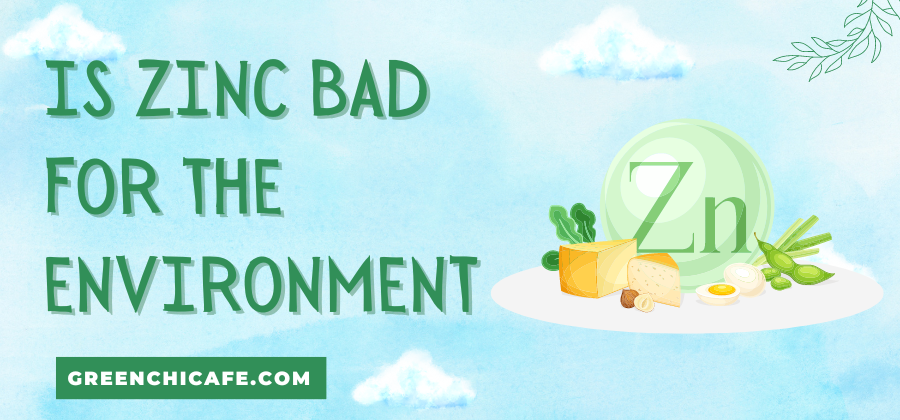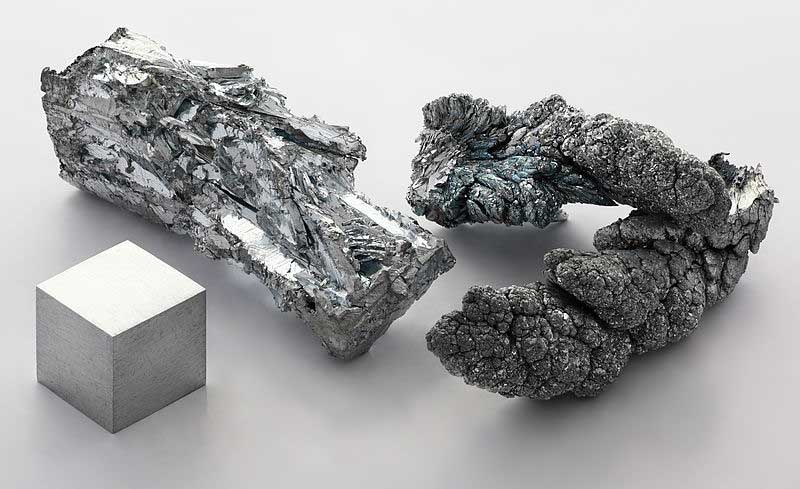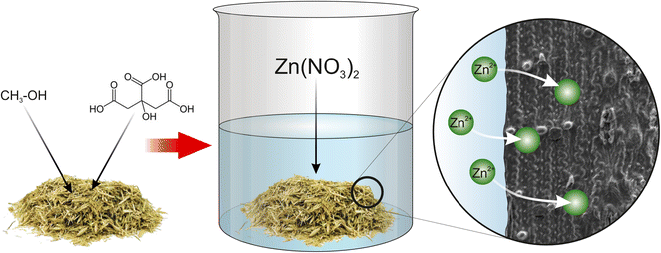Zinc is an essential micronutrient for all life forms, yet excessive zinc levels can be detrimental to the environment.
With responsible zinc usage and discharge regulations, we can harness its benefits while minimizing ecological harm.
This article examines the complex role zinc plays in nature and the potential risks of environmental zinc contamination.
Is Zinc Bad for the Environment?
Exposure to high levels of zinc over long periods may cause adverse health effects.
Zinc can enter the environment through various means, including zinc production by-products, the release of zinc from metal mining effluent, and contamination of soil and water in areas where zinc is naturally present or mined.
The mobility of zinc in the aquatic environment can be influenced by biological activity.
Large quantities of zinc can be found in soils, and when farmland soils are polluted with zinc, it can be harmful to animals.
While excess zinc intake is possible, studies have shown that small amounts of additional zinc from hot-dip galvanizing are not harmful.
Zinc is an essential micronutrient for living organisms, but excessive amounts can be toxic.
Therefore, although zinc is a naturally occurring element, excessive levels can have detrimental effects on the environment.
Key Points
- Zinc is an essential nutrient, but high levels are toxic to many organisms.
- Major sources of zinc pollution include mining, smelting, industrial wastes, and fertilizers.
- Regulating and controlling zinc discharges is necessary to prevent ecological harm.
How does zinc occur naturally in the environment?
Zinc constitutes about 0.004% of the Earth’s crust and is the 24th most abundant element.
It occurs naturally in air, soil, and water from weathering of rocks and releases from volcanoes.
Zinc deposited by hydrothermal fluids forms ore bodies suitable for mining.
It is also found in plants and animals.
The mobility and bioavailability of zinc in the environment depend on geological and biological factors.
Most zinc in soils is bound to organic matter or clay particles.
But acid conditions can liberate zinc into the soil solution, increasing its mobility and uptake by organisms.
What are some anthropogenic sources of zinc in the environment?
Mining and smelting of zinc ores are major anthropogenic sources of environmental zinc.
Mine tailings and smelter emissions contaminate surrounding soil and water bodies.
Industrial waste waters also contribute zinc from metal plating, machinery production, and other manufacturing processes.
Runoff from fertilized agricultural soils, burning of fossil fuels, and waste incineration can release zinc that leaches into groundwater or surface water.
Over 250,000 tons of zinc enter soils and aquatic ecosystems each year from human activities.
Why can high levels of zinc be toxic to aquatic life?
Though vital at low levels, excess zinc is toxic to aquatic plants, invertebrates, and fish.
High concentrations interfere with nutrient absorption, enzyme activity, and membrane function in organisms.
In fish, it impairs reproductive capability, larval development, and gill function.
It alters community structure by reducing species diversity and abundance.
At extremely high levels, zinc is lethal for aquatic life due to respiratory failure.
Contaminated water and bioaccumulation of zinc in sediments also pose risks for wildlife.
Do zinc emissions from hot-dip galvanizing pose environmental risks?
Hot-dip galvanizing applies a protective zinc coating to iron or steel by immersing it in molten zinc.
Studies of nearby soils and surface waters found minimal elevation of zinc levels from galvanizing emissions.
One study detected increased zinc within 300 meters of a galvanizing plant, but most sites showed no significant impact.
Levels remained well below the toxicity threshold for aquatic species.
While possible ecological risks exist from galvanizing, small amounts of zinc discharge adhere to safety guidelines.
How does zinc contamination occur in agricultural soils?
In agricultural soils, zinc contamination mainly results from pesticide use and repeated application of fertilizers and animal manure.
Long-term fertilization enriches the plow layer of cropland with heavy metals including zinc.
The median background level of zinc in soils is 50 ppm, but agricultural soils can contain up to 300 ppm.
Phytotoxicity results when zinc exceeds levels tolerable to plants.
Livestock suffer adverse health effects when grazing on zinc-rich soils.
Preventing further enrichment requires reduced metal inputs, but remediation is challenging due to strong zinc sorption.
Can zinc be removed from contaminated water?
Numerous processes are employed to remove zinc from industrial wastewater, mine drainage, and contaminated groundwater.
Common conventional methods include chemical precipitation, ion exchange, reverse osmosis, and electrochemical removal.
But biosorption using bacterial biomass offers a cheaper and environmentally friendly alternative.
Researchers found that metal-binding proteins synthesized by bacteria can effectively extract zinc from the solution.
Field trials of permeable reactive barriers containing bacterial biosorbents successfully lowered groundwater zinc concentrations below toxic thresholds.
How do regulations control zinc discharges to the environment?
Laws restrict allowable zinc discharges to air, soil, and water systems.
In the U.S., zinc smelting facilities must comply with National Emission Standards for Hazardous Air Pollutants under the Clean Air Act.
The Resource Conservation and Recovery Act regulates zinc levels in solid hazardous wastes.
Under the Clean Water Act, the EPA set the maximum contaminant level for zinc in drinking water at 5 ppm.
And zinc is one of 129 priority pollutants with prescribed effluent limits.
Regulations like these aim to control zinc pollution and protect ecological integrity.
Can zinc be used safely with responsible practices?
With conscientious use and discharge controls, zinc can provide important societal functions with minimal environmental impact.
Hot-dip galvanizing serves an essential corrosion protection role with small ecological risks.
And chelated zinc fertilizers increase crop yields without excessive soil accumulation.
But careless zinc usage, especially at large industrial scales, poses preventable contamination threats.
Striking the right balance means restricting emissions and operating within safe limits to avoid ecological harm.
While zinc is indispensable, its potential as an environmental pollutant necessitates responsible practices.
Is Zinc Metal Environmentally Friendly?
Zinc metal by itself has low toxicity and good environmental compatibility.
However, mining and processing zinc ores can release toxic metals and pollutants that harm ecosystems.
Smelting zinc sulfide ores generates large volumes of sulfur dioxide air emissions.
And zinc mining waste often contains heavy metals like cadmium, lead, and arsenic that leach from residuals and contaminate water sources.
But secondary zinc production by recycling scrap material has a much lower environmental footprint.
Recovering zinc from discarded products avoids mining impacts and reduces energy use and emissions.
While primary zinc production carries environmental risks if not responsibly managed, secondary zinc from recycling provides a sustainable metal source with reduced ecological harm.
With proper safeguards, zinc metal from both virgin and recycled sources can be utilized in an eco-friendly manner.
How is Zinc Used in the Environment?
In nature, zinc is an essential nutrient for all organisms and is required for many enzymes and proteins to function properly.
But zinc also has many beneficial uses in industrial and consumer products.
Over half of the zinc is used for galvanizing iron and steel.
Brass, nickel silver, and bronze contain zinc.
It is alloyed with copper to make pennies.
Dietary supplements, dyes, wood preservatives, skin ointments, and rubber utilize zinc compounds.
Zinc oxides and zinc sulfide have applications in plastics, ceramics, glass, and cement.
Zinc phosphide is used as a rodenticide.
The antimicrobial properties of zinc are applied in agriculture and cosmetics.
Zinc can serve useful purposes with proper handling to avoid ecological contamination.
The Verdict: Zinc in the Environment
In conclusion, the effects of zinc on the environment depend profoundly on its concentration and form.
Though toxic in excess, zinc at low levels is beneficial and essential.
With safety precautions and discharge regulations, zinc can be utilized sustainably.
But uncontrolled releases into air, soil, and water systems can endanger organisms and ecosystems.
The environmental impact of zinc represents a complex interplay of natural and human inputs.
With science-based policies and responsible practices, we can minimize zinc’s risks while harnessing its many uses.
Frequently Asked Questions
What are the Effects of Zinc on Humans?
Zinc is a trace element essential for human health. It is needed for immune function, wound healing, DNA and protein synthesis, and cell division. A deficiency of zinc can impair growth and development. Excessive zinc intake from contaminated food or water can cause stomach cramps, nausea, and vomiting.
What Makes Zinc Toxic to Aquatic Life?
In water, zinc bioaccumulates in fish and shellfish. It causes gill damage and respiratory failure in fish and reduced larval growth and survival. Zinc binds to sediments, harming bottom dwellers. Its toxicity increases with decreasing pH and increasing water hardness. Zinc affects the diversity, reproduction, and survival of aquatic species.
How Does Zinc Occur Naturally in Water?
Most zinc in water comes from the natural weathering of rocks and soils. Hydrothermal vents and volcanism contribute zinc to oceans. Plants release zinc into wetlands and rivers. Zinc binds to organic matter, limiting its mobility in water. Acidic conditions increase zinc dissolution. Background levels of zinc in rivers are generally less than 10 μg/L.
How Do You Remove Zinc from Water?
Many methods remove zinc from water, including chemical precipitation, ion exchange, electrocoagulation, reverse osmosis, and phytoremediation. Adsorption using bacterial biomass is promising. Permeable reactive barriers with metal-binding bacterial biofilms can treat zinc-contaminated groundwater. Most methods produce a zinc-rich sludge requiring disposal.
At GreenChiCafe, we are passionate about the environment and our natural world. Check out our website for more great content about living sustainably.

Annie is a passionate environmental writer and activist. She has been writing about sustainability, conservation, and green living for over 15+ years. Annie is dedicated to raising awareness about environmental issues and providing practical tips for living an eco-friendly lifestyle. When she’s not writing, you can find her volunteering with local environmental organizations, teaching workshops on zero waste living, or exploring nature. Feel free to get in touch with Annie: annie@greenchicafe.com


